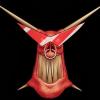[Weekly Discussion: Week 7] RPG Genre's flaws - "Input/Interface Schism"
Over a year ago, I had started 'weekly discussions' regarding the design flaws of the (j)RPG games, in an attempt to find creative ways to solve them. I believe there was much value to these discussions and have recently come up with a few more topics I think could be covered.
Given that the user base has also changed around here, I think it could bring quite a few new ideas as well.
Past discussions
Week 6
Week 5
Week 4
Week 3
Week 2
Week 1
---
Guidelines:
Feel free to discuss either:
- The Problem (helping identify the root cause of why this isn't fun).
- The Solutions (either games you know that have found a workaround).
- Or any (theoretical) idea you might have.
*Please make sure that you add sufficient explanation/arguments to your logic as I take this intellectual exercise seriously and believe others will too.
---
This week's topic: The Schism between exploration and combat.
Unlike most other game genre, (j)RPGs are played using at least 2, fundamentally different input/interface logic:
- Exploration: an organic portion of the game where input is used to move the characters: the input commands the protagonist directly (what direction to move, etc.)
- Combat: an inorganic portion of the game where UI takes precedence. Input is adapted to control the UI, which indirectly sets orders for characters to perform.
I always felt that this duality should be reconciled somehow.
There's been many attempts (such as the "Tales Of" (X) series), but none trully capture the essence of a true jRPG. Often, what is lost in these adaptation is having full control over characters and their elaborate skillsets.
The closest successful transitions I've seen were made in Tactics-games (FF Tactics, Bahamut Lagoon, etc), but the schism is still present, and even underlined.
Though the input is used to command each character individually, all the while retaining the depth of character abilities, battles take much longer, and feel even more distant from the exploration 'phase'. There's a clear difference in pacing, and it can't quite live up as a (j)RPG per se (although Bahamut Lagoon played that with that illusion very well).
Do you have any example of games that minimize this schism? Do you have an idea of your own on how to implement this?
It's quite an interesting question and echoes with one I asked myself some days ago. But first, let me expose my vision of this "problem" ![]()
In many JRPG there is an evident break between the exploring phase and the fighting phase. Why? There is simply too many differences between these two phases.
1. In term of information. In fight you need informations you don't need in exploration (attack set, hp bar, mana, etc...) and vice versa. (who need a mini-map during a fight?)
2. And also in term of control, in fight you control the UI. In the exploration you control the character.
So the question seems to be : "How to make an RPG in which there is no break between fight and exploration?"
Possible answer 1 : Put the exploration and the fight on the same "Level"
Let's try to ask for one of the old RPG ancestors, I call Baldur's gate! Little summary of what Baldur's gate is. It's a RPG game developped by the well-known studio BioWare and published in 1998. They use the Dungeon and Dragons (the roleplaying game on paper) as a base rule. The opponent and all the characters are on the same map and you have to move all your 6 characters by cliking where you want them to go. When a fight occurs, the game pause itself and you can then give the orders (attack, move, cast a spell, etc...)
If you want more, you can check the other games from the same team : Knight of the old republic or the more recent Dragon Age series.
Most MMORPG use the same concept, the fight UI is the same as the exploration one, and that make the transition nearly non-existent. :)
Possible answer 2 : Smooth it all!
And then I remark the little "j" you put before RPGs :)
First thing wich comes to mind when speaking of Japan RPG? For me it's Final Fantasy. So let's talk about their solution by starting exposing the biggest problem of this transition : It breaks the immersion.
In order to smooth this break, Final Fantasy try to put the game in the same place as the game. For exemple, if you fight in a snowy moutain, you will have a snowy background in your fight. They make you feel that you fight in the same room you were exploring earlier.
The french T-MMORPGs Dofus and Wakfu use the same concept, the only difference between the exploration phase and the fighting phase are the grid that spawn during the fight. But this latest exemple is a double off-subject because not an RPG and not even japanese :)
And that's it for y contribution for this week's discussion. I hope I didn't went to far off the topic, and it was nice thinking about this subject.
Solution/Workaround
Chrono Trigger did a good job of pressing finite exploration locations and battles together. There are actually 3 interfaces, and the one you can measure a clear difference in is found during exploration - Overworld and the exploration - 'finite' location (towns or some other dungeon).
The exploration of locations and the battles found within are actually pretty difficult to tell the difference between. There's a music score to set the mood, your characters pull out their weapons, they stand in a set location and (if you choose) there's an active timer which means if you don't do anything the enemy will keep attacking you relentlessly.
This is evident when you run into any enemy. Enemies who are grouped will all gather to fight you if they're also on screen. It's rare you encounter an enemy that despawns the others around it, you usually end up fighting them all at once as they were, or an uncommon enemy will spit apart or mutate. When the fight begins your party takes a fighting stance, and when they attack, melee characters walk or jump over to what they are hitting so you can see it all happen very clearly.
You can avoid many enemies like they are traps, they're visible or they spawn at set points if you step on them. Some enemies are moving as well, boss battles aren't necessarily overpowered if you avoided a grind, and completion of entire sections of the game can be done quickly.
The key points here in my example are mostly transitions:
*The enemies are tangible before they attacked you
*Your battle arena looks exactly like it did when enemies attacked you
*There's an active timer (optional), so if you fall asleep irl you'll wake up to a game over
*Characters behave accordingly while entering battle, extremely heroic and raring for a fight.
Commonalities that are apparent in Chrono Trigger and other RPGs which set the mood. Not necessarily good or bad, but these are important, there's a learning curve that you must pass through:
* Entering a fight has a change in atmosphere. There's a brief load, you lose control of the party. Changes are immediate in music and gui.
* Controller input is not 1:1 for exploration or battle, and there's a common cursor noise indicating you should focus on the gui.
* Overworld travel is quite different from the finite locations that you enter.
* There are no random battles in Chrono Trigger ( other games do away with random battles, it may be surprising! )
* There's a lot of character development
I imagine if this were your very first RPG you'd have a hard time figuring out what's going on simply because the battles don't drop a huge road sign in your face, stop trying to move the characters and pay attention to the gui. I think it works anyway.
The other obvious workaround is: Chrono Trigger simply doesn't have any combat in the Overworld, no reason to think of a transition!
I've read about the idea guy. It's a serious misnomer. You really want to avoid the lazy team.
Chrono Trigger did a good job of pressing finite exploration locations and battles together. There are actually 3 interfaces, and the one you can measure a clear difference in is found during exploration - Overworld and the exploration - 'finite' location (towns or some other dungeon).
This is evident when you run into any enemy. Enemies who are grouped will all gather to fight you if they're also on screen. It's rare you encounter an enemy that despawns the others around it, you usually end up fighting them all at once as they were, or an uncommon enemy will spit apart or mutate. When the fight begins your party takes a fighting stance, and when they attack, melee characters walk or jump over to what they are hitting so you can see it all happen very clearly.
I call Baldur's gate!
Most MMORPG use the same concept, the fight UI is the same as the exploration one, and that make the transition nearly non-existent.
Arguably, most mmorpgs are 'gauge-fests' (aka, skills on cooldown). This doesn't capture the essence of retro jRPGs.
Thanks for your contribution though, I'll most certainly re-install Baldur's Gate now (food for thought!) especially with the new enhanced edition released a while back!








